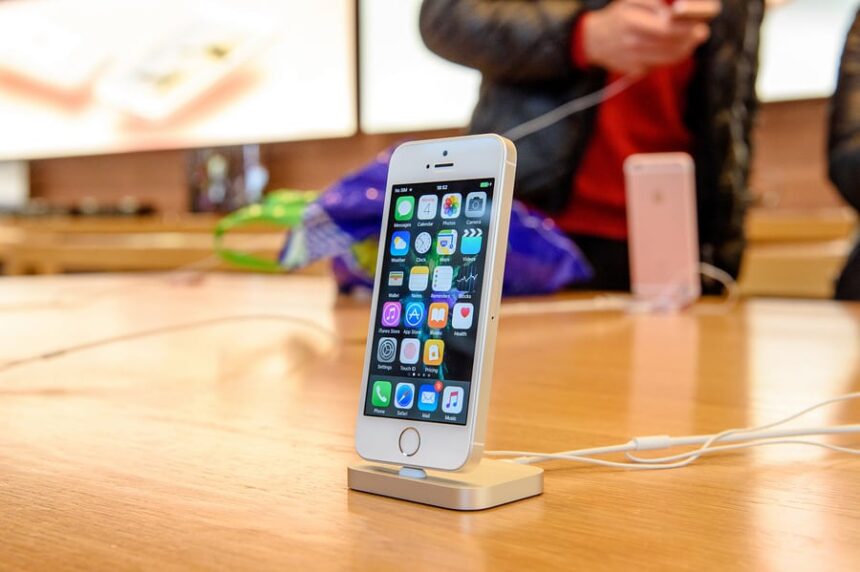In a world constantly shaped by technological innovation, the term CDiPhone has begun to appear in conversations around hybrid digital devices. While not yet a household name like iPhone or Android, CDiPhone refers to a conceptual or emerging category of mobile technology that merges the compact disc (CD) experience with modern smartphone capabilities—or, alternatively, to a next-gen multimedia smartphone optimized for content delivery (CD) at a level not seen before. In either interpretation, CDiPhone represents an evolution in how we perceive multimedia consumption, hybrid device functionality, and digital portability.
In this article, we’ll take a deep dive into understanding what a CDiPhone is (or could be), unpack its features, analyze its potential uses, and explore its significance in both current and future digital ecosystems.
1. Defining CDiPhone: A Convergence of Concepts
To understand the term CDiPhone, we must first dissect the components:
- CD: Traditionally stands for Compact Disc, a digital optical disc storage format developed in the 1980s. But in modern tech contexts, CD may also refer to “Content Delivery” or “Creative Device”, depending on usage.
- iPhone: A globally recognized brand by Apple Inc., known for setting the standard in mobile technology, app ecosystems, and smart device integration.
So, what is CDiPhone?
Depending on the context, CDiPhone might refer to one of the following:
- A conceptual smartphone that integrates physical CD capabilities (rare, niche, or retrofitted designs).
- A mobile platform optimized for high-fidelity multimedia content delivery, potentially including:
- High-res music streaming (akin to CD quality or better),
- Offline data access reminiscent of CDs (fixed media logic),
- Encrypted content stored in virtual “disc-like” environments.
- A hybrid device (conceptual or real) that offers nostalgia and functionality—bridging the past and the present in media consumption.
Regardless of the exact definition, CDiPhone combines nostalgia, digital convenience, and cutting-edge features into a single idea.
2. Core Features of CDiPhone
While not an officially released Apple product (as of this writing), the CDiPhone can be explored as a speculative or emerging technology with features based on hybrid usage. Let’s examine what a CDiPhone might include:
a. High-Fidelity Audio Support
One of the standout features is its support for lossless or near-lossless audio, equivalent to or better than CD quality (16-bit/44.1 kHz). With rising consumer interest in high-quality music streaming (as seen in Apple Music’s and TIDAL’s HiFi tiers), a CDiPhone would be built to support:
- FLAC, ALAC, and WAV file formats
- Dedicated DACs (Digital to Analog Converters)
- Enhanced headphone support (wired + wireless)
b. Virtual CD Storage Interface
Emulating the logic of CDs, the CDiPhone might include a virtual disc system, where users can store music, videos, or software as if each set of files were on a “virtual disc.” This could be useful for:
- Artists releasing albums as digital discs,
- Games or software installs mimicking classic CD-ROM style access,
- Organizational benefits for media libraries.
c. Retro Mode & Disc Emulation
To appeal to nostalgia, a CDiPhone could feature a Disc Emulation Mode, allowing users to simulate inserting and playing CDs via an interactive interface. Paired with haptics and audio feedback, this could replicate the feel of a physical CD player—while maintaining the speed and storage capacity of modern SSDs.
d. Physical Disc Integration (Conceptual/Niche)
Though impractical on a mass scale, some CDiPhone concepts include slots or attachable accessories for mini-CDs or full CDs. While this isn’t likely to go mainstream due to size constraints and cloud storage dominance, it’s an intriguing thought for collectors and audiophiles.
e. Content Delivery Optimization
“CD” as Content Delivery could mean optimized pipelines for streaming, downloading, and sharing multimedia:
- Low-latency streaming of 4K/8K videos
- Auto-caching algorithms for offline access
- Smart compression and decompression engines
f. Multi-Platform Integration
CDiPhones could be designed to work seamlessly with smart TVs, laptops, speakers, and cloud services. Features may include:
- AirPlay or Bluetooth Hi-Res audio transmission,
- Direct casting to sound systems,
- Cross-device playback syncing (e.g., starting a “disc” on one device and continuing on another).
3. Use Cases and Applications
A device like the CDiPhone opens up a variety of practical and creative use cases. Whether you’re a musician, student, traveler, or tech enthusiast, it promises a tailored experience.
a. Music and Audiophile Experiences
For people who value audio quality over convenience, CDiPhone would be a dream device. It could offer:
- CD-quality or better audio streaming,
- Offline libraries organized by album/disc,
- Artist-signed virtual CDs or exclusive liner notes/digital art.
b. Digital Archiving
For educators, researchers, and students, CDiPhone’s virtual disc concept can help organize large archives of content by subject or course—each course functioning as a “disc.”
- Professors could distribute content in disc formats,
- Students can “insert” a course disc and access modules,
- Long-term preservation of data in a structured layout.
c. Gaming and Software Bundles
Think of CDiPhone as a platform for retro-style gaming where game developers can release digital “CDs”—containing the base game, soundtracks, and bonus content.
d. Collector Editions and Virtual Memorabilia
In an age of NFTs and digital collectibles, CDiPhone could offer something tangible-feeling with limited-edition virtual discs featuring:
- Exclusive music albums,
- Behind-the-scenes content,
- Interactive booklets or 3D liner notes.
4. Cultural and Technological Significance
In many ways, the idea of a CDiPhone is symbolic—it bridges analog warmth with digital efficiency. While CDs themselves are largely obsolete, the format is remembered fondly for:
- Tangibility,
- Ownership,
- Sound quality.
In contrast, smartphones are sleek, disposable, and cloud-dependent. CDiPhone conceptually reunites ownership and quality with convenience, offering a compelling alternative to transient digital consumption.
Additionally, it aligns with the neo-retro tech movement, where modern devices reimagine old formats—like vinyl turntables with Bluetooth, or digital typewriters for writers.
5. Challenges and Limitations
Despite its appeal, CDiPhone also presents certain challenges:
a. Storage and File Size
High-fidelity media files take up more space. Without compression, users may need terabytes of storage to keep extensive libraries.
b. Niche Market
Audiophiles and retro-tech enthusiasts form a passionate but relatively small market. CDiPhone might struggle to achieve mainstream adoption unless tied to broader multimedia use cases.
c. Physical Disc Mechanics
Including CD hardware in a slim phone body is largely impractical and could reduce durability and battery life.
d. Licensing and DRM
Emulating CDs in a digital environment raises questions around content protection, ownership rights, and DRM enforcement.
6. Future Possibilities
While the CDiPhone might not exist in the way the iPhone does, its concept may inspire future devices. Whether it comes from Apple, an independent manufacturer, or remains a niche product for collectors, the idea is already pushing boundaries.
In the future, we might see:
- CDiPhone-inspired apps for organizing music in disc-like collections,
- Digital artist editions resembling old-school albums,
- HiFi-certified phones that become the standard in music streaming.
Conclusion
CDiPhone is more than just a fusion of CD and smartphone—it’s a concept rooted in values like ownership, quality, and curation. Whether as a speculative design, a collector’s dream device, or a real product in development, the CDiPhone challenges us to rethink how we engage with digital media.
In a world dominated by cloud streaming and subscription fatigue, a return to curated, high-quality, and self-contained digital experiences may be just what consumers crave. CDiPhone, whether literal or metaphorical, could be the bridge between the old-school satisfaction of “pressing play” on a physical album and the convenience of modern digital life.



